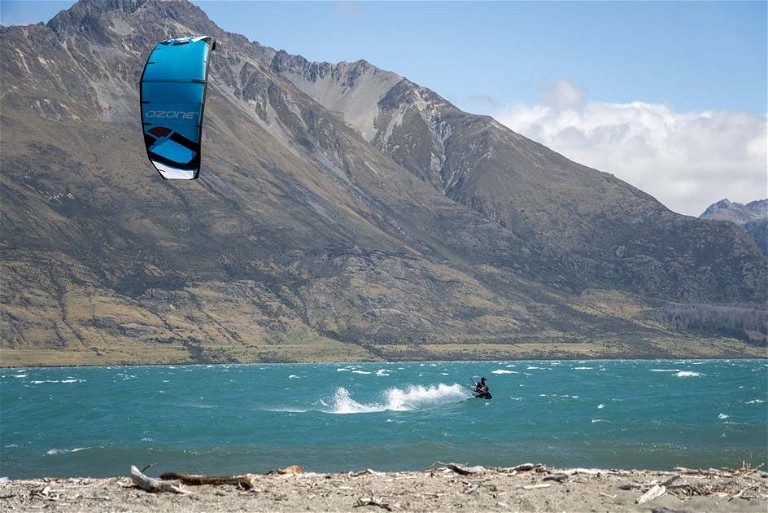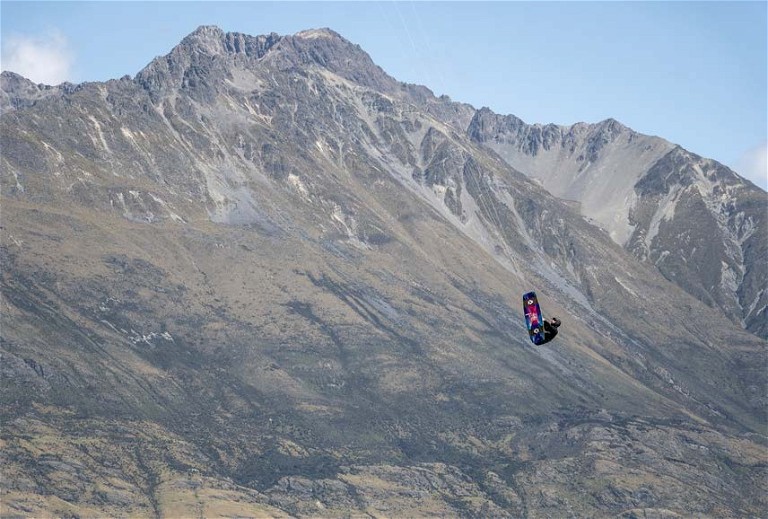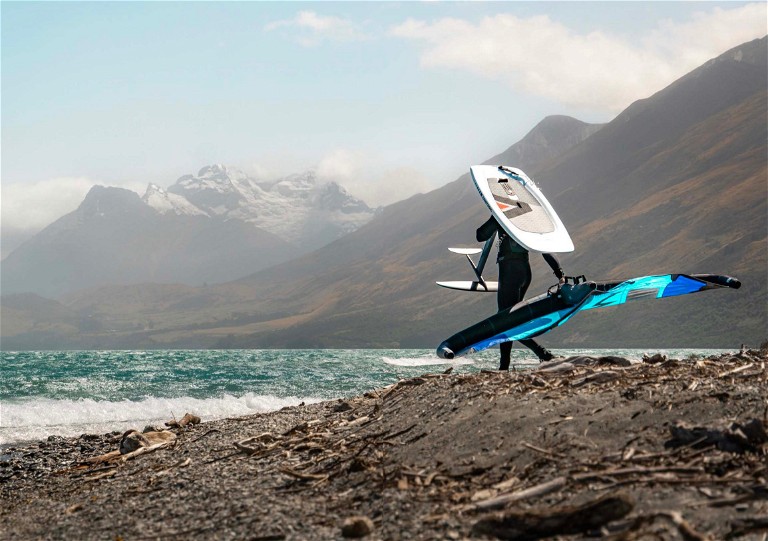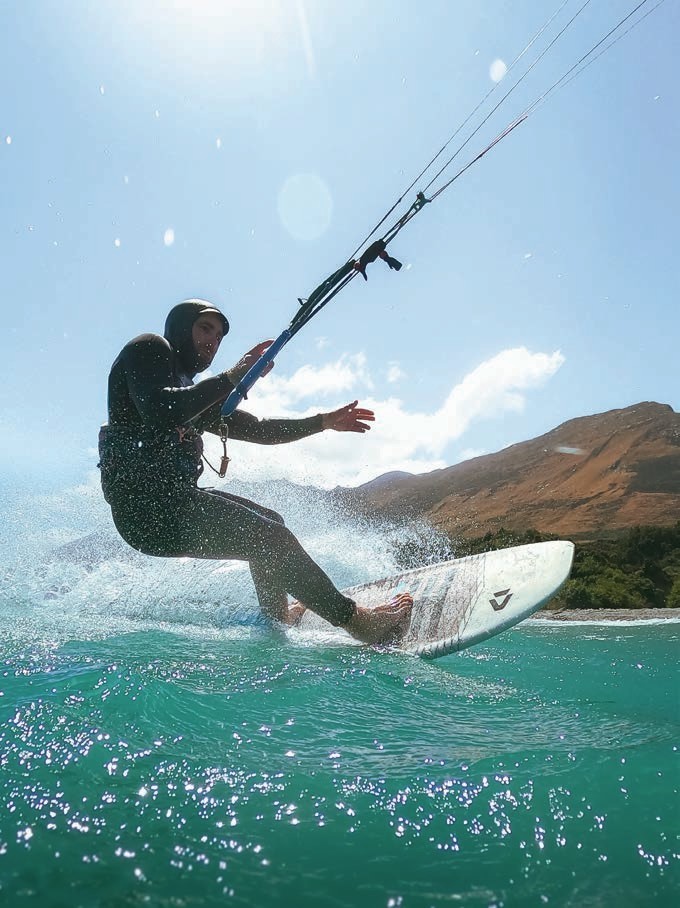COLD WATER THERAPY
Words & Images by James Fisher
We’ve all heard it, the latest and greatest way to feel on top of the world. The oldest cure-all and the newest trend to help boost the immune system, increase dopamine, lower cortisol, and set yourself up for a winning day. All your favourite podcasts are raving about it – ‘cold water immersion’. I’m all for it. It works. Science says it does and science is smarter than you or I.
When it comes to flooding your body with a cocktail of feel-good chemicals, there are ways that don’t involve sitting in the bath of ice struggling to control your breath or standing in a cold shower making weird noises whilst your housemates are wondering what’s going on the other side of the bathroom door.
Exercise. Exercise that you enjoy, that has some kind of inherent risk or is difficult and increases your heart rate. Activities that heighten your senses, catapult you into the ‘flow state’, and initiate the physiological changes that we all spend most of our day trying to gain by consumption.
Social media, junk food, dating apps, or sitting at the local boozer with Dave. Granted, that stuff works in the immediate, short term. But is there any long-term gain? Here’s a fun fact from Dr. Andrew Huberman – cold water immersion increases dopamine levels in a way that rivals any artificial hit, except it lasts much, much longer.
So, what if there was a way to get all this, all at once? All in a positive environment that as far as I can tell, has no negative effect on your mind or body.
What if you can get the cold water immersion, the adrenaline spike, the outdoors, the sunlight, the pressure release, and the quiet mind that allows nothing but the moment to consume you?
Kiteboarding in the cold water of New Zealand’s South Island does exactly that! Don’t be fooled – it’s not for the faint-hearted and it’s not easy to get going. But none of the best things in life are.
CROSSOVER
There are many beautiful things about this sport, and one of them is the crossover or the similarities to other sports that make it easier to pick up and have a good time. Already surf? Then you understand board control, know waves, and don’t freak out when you’re tumbling through the wash. Good at wakeboarding? You can get wake bindings for your kiteboard and do the same tricks. Enjoy the snow? Snowkiting is a thing. Foil behind your boat? Now you can do it when the wind picks up. Have a fetish for peeing in rubber suits? You’re probably already a spearfisher…
All jokes aside, it’s the kite or wing skills and the environment that really separate these sports. The other skills are all easily transferable when learned safely.

THE ALLURE OF MISERY
Down here, in ueenstown and the South more generally, two things are in no short supply water and wind.
In fact, as I write this, looking out the window over ake hakatipu with its ori legend of the giant and the princess, I can see the bitterly cold southerly weather system rolling in from the South acific, bringing with it the unwelcome pre-winter snowfall that dusts the rugged mountains. he advancing white caps, generated by charging wind breaking up the once smooth surface, look like horses galloping along a vast pastel blue desert that stretches out in three directions.
As kiteboarders, the wind and whitecaps are what we look for. he oldest way to determine wind speed is the eaufort Scale. sed since the beginning of seafaring, the eaufort Scale suggests that when we see white crests rolling off the swell, we know there’s a - -knot wind and we’re likely good to hit the water. ind direction? Doesn’t matter. here’s always a spot that works somewhere.
We rug up, bang some S on the face, throw the mm wetsuit and hood in the back of the car, likely still wet from the last session and drive to whichever spot the wind meter shows is most promising.
It’s the pull of solitude when out on the water and the allure of a likeminded community that gets me off my arse, out the door, and into the expected misery when the wetsuit first floods with wintery li uid, briefly taking my breath away and forcing the long controlled exhale that marks that start of the session.

HEALING THROUGH FLOW
There is another reason I’ve been out in the cold water so much recently. oncussion, the invisible demon of brain injuries.
Anyone of you who has suffered a serious concussion knows the havoc it plays. It forces us to take months off work, struggle just to get through the days, and try to reduce symptoms with meditation, sleep, eye masks, wearing ear plugs, or relying on gentle cardio for movement.
Despite the sport’s inherent dangers and potential for some nasty slams, it can also be very low impact. n the correct kite or wing, it can be majestic, smooth, and silent. Allowing the mind to be at peace – to be totally present and think about nothing but the wind, the kite position, and your board. ombine that with glacier-fed lakes or the frigid waters of the southern coast and we have, what I’ve found to be, a potent form of cold water therapy.
This feeling of total immersion or ‘flow’ can be amplified if you spend the time learning to ride a foil board. lying above the knee-clattering chop, a small hydrofoil under the surface glides through the water like a bluefin tuna on the run, creating enough lift to hold the rider up to m above the surface hurtling along at breakneck speeds… or cruising for a docile ride.
The art of foiling is the art of Zen. Subtle, gentle, and smooth. ith the contrast of experiencing the thrill of controlling the immense power of the wind simply for the pure joy of it. o be honest with you all, I’m not a foiler. I prefer high wind and big jumps. So, to avoid being called out as a fraud, I asked fellow local and friend, ack, to describe how it feels for him. In his words:
When you get the board out of the water and ride on the foil for the first time, the total silence, the speed over the water, just feels pure.
I agree, kiteboarding or winging, in all its forms, does feel pure. or me, kiteboarding has been my saving grace. he key to my sanity and the road to recovery.

COMMUNITY
Our local community here has kiters, windsurfers, and the new breed of wing foilers. Between them, these groups cover all ages, genders, and backgrounds.
There are tandem paraglider pilots that need something to do when they’re blown out and can’t work, heli-ski guides that need to top up their adrenaline levels in the off-season, young van dwellers travelling around the country with their gear in search of wind and waves, and retirees living it up. Of course, there are also people like me, the average James – a tradie who knows that on a sunny summer’s day, the sea bree e will blow in, lighting up Jacks Point Beach, providing the opportunity to rinse away the sawdust and the loud noises from the day’s work. The glow of the evening sun transforms the Remarkables from ominous black to bright golden orange before disappearing behind Cecil Peak, casting us all into shadow and the chills that shortly follow.
hat’s usually our cue to head in, warm up, and have a chat. Like all the previously mentioned demographics, I’m grinning from ear to ear, dripping water from the nose and reciting stories of big airs, new tricks, top speeds, or perfect flow. We then drive home for dinner to excitedly tell anyone else who’ll listen.
This drive regularly sees me shouting out loud whilst drumming on the steering wheel as loud music and dopamine flood my system.
One story regularly told is that of local tour guide and old-time kite foiler Errol. He has a secret spot he likes to call Treasure Island. Far up wind and well out of reach of the inefficient twin tippers like me, he has a secret stash of craft beers buried on a small stone beach. The old kite pirate will rig up, kite upwind to his ‘ marks the spot’, kilometres away from the rabble, to sit and have a beer in peace, before returning a couple of hours later to where the rest of us are still sessioning closer in. Being the forward thinker that he is, he has a life jacket with numerous pockets that will conveniently fit six cans. We all know when he’s run out of beers at reasure Island because these partly torn pockets are fully loaded with strong ha ies and pale ales as he waves goodbye, foil board slung under his arm and kite flying high.
UNIQUE LOCATIONS
On smoko today, Google ‘kiteboarding’ or ‘wing foiling’. You’ll likely see photos of smooth flat water, shallow blue lagoons, white sand beaches, tanned skins barely covered with bikinis and boardies, and some palm trees blowing sideways in a smooth, linear, consistent and beautifully warm sea bree e in a far-off tropical paradise. Enticing right?!
Now close your eyes and imagine the same perfect knee-deep water but remove all the nice things you just saw. Add chop, cold wind licking up icy spray, towering mountains with cascading glaciers, and enormous valleys filled with creeks and wild deer.
eplace the wide-open, safe, white sand beaches with small rocky lakeshores covered in rosehip, gorse, willows, or native bush. Barely enough space to lay out your lines and likely a tree or ute that you need to tie yourself to in order to launch because no one else made it over yet.
The wind is probably blowing dangerously offshore and those beautiful tanned bodies? hey’re old builders or leather-skinned ski guides covered in neoprene from head to toe. Heading to the coast? It’s likely similar but with a sandy beach at least. hat’s South Island kitesurfing. Still enticing?
or most, not really. However, it’s these gnarly, uncomfortable conditions that not only make it exciting but also keep the crowds away. Difficult conditions mean that we can kite anywhere in the world because we’ve trained in the gnarliest of it. Despite the lack of palm trees, cinnamon skins and coconuts, there’s a spot for every wind direction. Northerlies at Glenorchy Lagoon for some offshore flat-water fun or 25 Mile for windy, wavey chop.

n a weekend, there’s always a hardy few willing to chase the latest southwest system, road tripping south to hit the waves at Monkey Island or practice tricks at the long, thin, protected flat water of Te Waewae Lagoon or Awarua.
The Queenstown favourite is a place called ‘ ardine’ in a southerly sea breeze. The Jacks Point location is described by Red Bull King of the Air Kiwi, Marc Jacobs, as a world class kite spot perfect for big air and wing foiling alike.

Winter mornings are for making the most of the early, frosty katabatic northeast wind that blows down Coronet Peak across the lake and into Kingston. Add to that, naka, H wea, the lakes of Mackenzie Country plus any of the coastline and we have 365 days a year of kiteboarding conditions… so long as you’re willing.
THE RISK
There is a more serious side to all this feel-awesome fun. It’s important to understand how dangerous the sport can be and the immense power that can be generated when combining a 10m² kite and a 20-knot wind. The factors that lure us in are the same ingredients that create the potential for injury, or worse.
Lessons are crucial! Learning safely with a qualified instructor is the only safe way. One wrong move with the kite and you’re in the sky, uickly heading for the ground, a tree, or the water. Then it’s up along down, up along down. eabagging we call it. Not a good time when it’s accidental.
For reference, the world kiteboard record jump is now 37m high! Add that kind of power to 200m deep, frigid waters of NZ lakes or the turbulent coastlines found throughout this country and no one’s having a good time if you don’t know what you’re doing.
THE REWARD
Remember Dr.Huberman’s fact about cold water immersion from the start of this article?
Well, if you’re willing to put the time in to learn a new skill and get after it, willing to look out the window, see the cold wind blowing, and still put on the damp wetsuit in search of a good time, then something similar to an artificial hit with Dave at the boozer, but far more rewarding, could be on the cards for you at knock-off time or the weekend.
Find a school and go get some lessons on kiteboarding, wing foiling, or anything else that involves fun in cold water – especially if it’s a little gnarly and if most people wouldn’t dare.
That’s where all the great times live. hey’re out in glacial waters and cloudy skies. hey’re lurking in the turbulent oceans and hard-to-reach places that take a bit of misery to get to a certain mindset to enjoy. I guarantee that if you find someone else to join you or someone who’s already out there, you’ll connect in ways far deeper than pub banter. You will feel new and you will feel happy. You’ll drive home screaming to yourself with nose water landing on your lap and you’ll be hooked.
